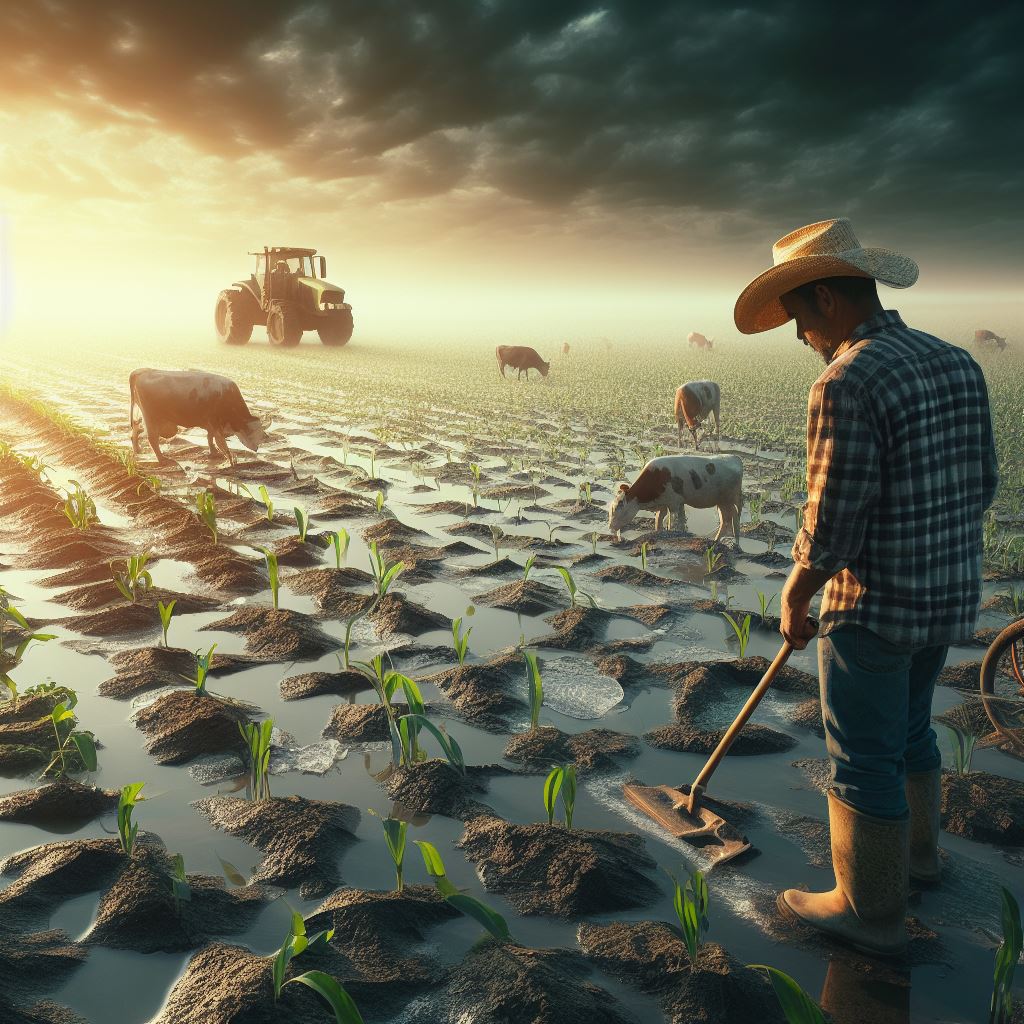Introduction
In the intricate dance between nature and climate change, pest patterns emerge as silent but potent players.
As global temperatures shift and ecosystems evolve, the dynamics of pest behavior undergo a profound transformation.
This section unveils the unseen effects of climate change on pest patterns, exposing a world where these tiny, often overlooked creatures wield immense ecological influence.
From the bustling cities to the quiet corners of rural landscapes, the repercussions are felt far and wide.
By delving into the intricacies of this symbiotic relationship, we unravel the implications for agriculture, biodiversity, and human health.
Join us on a journey through the clandestine realm of pest patterns, where climate change orchestrates a symphony of transformations, altering the very fabric of our natural world.
Definition of pest patterns
Explanation of what pest patterns refer to
Pest patterns refer to the recurring and predictable behavior of pests in response to environmental factors.
Examples of common pest patterns
Sudden increase in mosquito populations during the rainy season
Emergence of aphids on plants during the spring season
Higher infestation rate of rodents in colder months as they seek shelter
Impact of pest patterns on agriculture
Pest patterns pose significant challenges to agricultural practices by causing crop damage and reducing yields.
Furthermore, they can cause economic losses by increasing the need for pest control measures.
For instance, pest patterns can lead to increased usage of pesticides, causing environmental concerns and health risks.
Additionally, pest patterns can disrupt the delicate balance of ecosystems by favoring certain pest species over others.
This leads to a decline in biodiversity, making agroecosystems more vulnerable to pest outbreaks.
Moreover, pest patterns can have indirect effects on agriculture by influencing the spread of vector-borne diseases.
For example, climate change-induced pest patterns may lead to the expansion of disease-carrying mosquito populations.
Transform Your Agribusiness
Unlock your farm's potential with expert advice tailored to your needs. Get actionable steps that drive real results.
Get StartedThis can have severe implications for both human and animal health, impacting livestock and affecting food security.
In summary, pest patterns encompass the recurring behavior of pests in response to environmental factors.
These patterns can have significant impacts on agriculture, including crop damage, economic losses, and ecosystem disruptions.
It is crucial for farmers, researchers, and policymakers to understand and anticipate these patterns to effectively manage pests and mitigate their negative effects on food production and ecosystems.
Read: Agroforestry: A Climate-Smart Farming Future
The role of climate change in pest patterns
Overview of climate change and its causes
Climate change refers to long-term alterations in the Earth’s climate system due to natural and human activities.
Human activities, such as burning fossil fuels and deforestation, release greenhouse gases that trap heat in the atmosphere.
This trapped heat leads to global warming, causing changes in temperature and weather patterns worldwide.
The main culprits of climate change are carbon dioxide, methane, and nitrous oxide emissions.
These emissions result from industrial processes, transportation, agriculture, and land use changes.
This is an urgent issue requiring immediate global action to mitigate its causes and effects.
Climate change’s impact on ecosystems
Climate change disrupts ecosystems, altering the delicate balance between plants, animals, and their habitats.
Rising temperatures affect the distribution of plant species, leading to shifts in vegetation patterns.
Extreme weather events, such as hurricanes and droughts, become more frequent and intense, further disturbing ecosystems.
Polar ice melts, resulting in rising sea levels and the loss of critical habitats for various species.
Changes in precipitation patterns affect water availability, impacting freshwater ecosystems and agriculture.
Connection between climate change and pest patterns
Changes in temperature and precipitation
Climate change alters temperature and precipitation patterns, favoring the survival and reproduction of certain pests.
Warmer temperatures create more suitable conditions for pests to thrive and expand their ranges.
Changing rainfall patterns can disrupt natural pest control mechanisms and favor the growth of pest populations.
Effects on pest populations and behavior
Climate change can affect the life cycles, behavior, and physiology of pests, altering their population dynamics.
Shorter winters and milder temperatures allow pests to reproduce and spread throughout the year, increasing infestation risks.
Pests may also become more resistant to pesticides as they evolve and adapt to changing environmental conditions.
Altered pest behavior, such as shifts in feeding and migration patterns, can further disrupt ecosystems and agricultural productivity.
In essence, climate change has significant impacts on pest patterns and poses challenges for ecosystems and human well-being.
Understanding these connections is crucial for implementing effective pest management strategies and mitigating climate change.
Prevention, adaptation, and sustainable practices are vital in reducing the negative effects of climate change on pest dynamics.
Read: Floods & Agriculture: Preparing for the Surge

Impact on agricultural systems
Increased pest pressure on crops
Climate change has led to numerous pest outbreaks that cause significant damage to crops.
Examples of these outbreaks include the spread of the mountain pine beetle and the rise of corn earworms.
These pests thrive in warmer temperatures, allowing them to reproduce and spread rapidly.
The economic and ecological consequences of these outbreaks are dire.
Farmers face massive losses as their crops are destroyed by pests.
This leads to a decline in agricultural productivity and income, affecting both individuals and economies.
Furthermore, the ecological balance is disrupted as pests destroy natural habitats and disrupt food chains
Challenges faced by farmers and agricultural industries
Farmers are constantly battling pests and struggling to protect their crops.
To mitigate pest damage, various methods are employed.
These methods include chemical pesticides, biological control agents, and crop rotation
However, the effectiveness of these traditional methods is diminishing due to the changing pest patterns.
Pests are becoming more resistant to pesticides, rendering them less effective.
To adapt, farmers are adopting emerging pest management practices.
Integrated Pest Management (IPM) focuses on using a combination of strategies to control pests.
These strategies include biological control, cultural practices, and the use of resistant crop varieties.
By diversifying their pest management approaches, farmers can reduce reliance on chemical pesticides
Lastly, climate change is causing a significant increase in pest pressure on agricultural systems.
Farmers and agricultural industries face immense challenges in protecting their crops and ensuring productivity.
It is crucial to develop sustainable and innovative pest management practices to mitigate the detrimental effects on crops and the environment.
Read: Coastal Farms: Rising Sea Levels’ Big Impact
Case studies and examples
Specific regions affected by pest patterns due to climate change
Case study 1: Impact on vineyards in California
Due to climate change, California’s vineyards have experienced increased pest populations and disease outbreaks.
Vineyard owners have reported a rise in the frequency and intensity of pests such as grapevine phylloxera.
Warmer temperatures and altered rainfall patterns have created favorable conditions for pests, affecting grape quality and yield.
Showcase Your Farming Business
Publish your professional farming services profile on our blog for a one-time fee of $200 and reach a dedicated audience of farmers and agribusiness owners.
Publish Your ProfileCase study 2: Effects on wheat production in Australia
Climate change has posed significant challenges to wheat farmers in Australia, leading to pest-related issues.
In recent years, milder winters have caused an expansion in the range of pests like the Russian wheat aphid.
This invasive insect has caused substantial damage to wheat crops, decreasing yields and increasing production costs.
Insights from these case studies
Successful strategies employed by farmers
Farmers in California have implemented integrated pest management techniques to combat the rising pest threat.
These strategies include the use of natural predators, crop rotation, and resistant grapevine varieties.
Similarly, Australian wheat farmers have adopted resistant wheat varieties and implemented pest monitoring systems.
Lessons learned for adapting to changing pest patterns
The case studies highlight the importance of proactive pest management practices in the face of climate change.
Early pest detection, regular monitoring, and timely intervention are crucial for minimizing damage and optimizing crop yield.
Farmers also emphasize the need for research and innovation to develop pest-resistant crop varieties suitable for changing conditions
Read: Greenhouse Gases: Farming’s Role and Solutions
See Related Content: Vertical Farming: A Climate Solution
Awareness and adaptation
Importance of understanding and monitoring pest patterns
In order to effectively mitigate the impact of climate change on pest patterns, it is crucial for us to have a deep understanding of these patterns and monitor them closely.
Collaboration between scientists, farmers, and policymakers
Tackling the issue of pest patterns requires a collaborative effort among scientists, farmers, and policymakers.
Strategies for adapting to climate change’s impact on pest patterns
In order to adapt to the changing pest patterns caused by climate change, we need to implement effective strategies:
Research and development of resistant crops
Investing in research and development of crops that are resistant to pests can significantly reduce the damage caused by changing pest patterns.
Integrated pest management approaches
Implementing integrated pest management approaches, which combine various pest control methods, is crucial in adapting to changing pest patterns.
Support for sustainable farming practices
Promoting and supporting sustainable farming practices can help reduce the vulnerability of crops to pests in the face of changing patterns.
Understanding and monitoring pest patterns, collaboration among different stakeholders, and implementing effective strategies are essential in adapting to the impact of climate change on pests.
By taking these actions, we can mitigate the negative effects and ensure the sustainability of our agricultural systems in the face of a changing climate.
Conclusion
We have explored the unseen effects of climate change on pest patterns.
It is essential to increase awareness and take action to combat the impacts of climate change on pest outbreaks.
Through this understanding, we can contribute to the protection of our environment and ensure a sustainable future.
Climate change has disrupted ecosystems, leading to shifts in pest populations and spread of diseases.
Rising temperatures and altered rainfall patterns have favored the proliferation of pests in new areas.
The increased frequency and intensity of extreme weather events further exacerbate pest outbreaks.
We have witnessed the expansion of pests like mosquitoes, ticks, and beetles due to these changing conditions.
These pests pose risks to human health, agriculture, and ecosystems, resulting in economic and environmental consequences.
Addressing climate change requires collective efforts to reduce greenhouse gas emissions and mitigate its impacts.
On an individual level, we can promote sustainable practices, such as reducing waste and conserving energy.
Additionally, supporting organizations working on pest control and climate change research can make a difference.
Together, we can create a shift towards a climate-conscious society that strives to protect our natural resources.
By taking action now, we can minimize the negative impact of climate change on pest patterns and build a better future.




